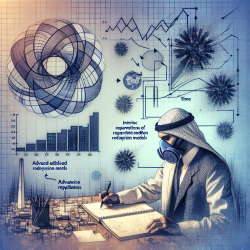In the realm of environmental science, understanding the intricate relationships between various pollutants is crucial for effective air quality management. The study titled "Global and Geographically and Temporally Weighted Regression Models for Modeling PM2.5 in Heilongjiang, China from 2015 to 2018" offers valuable insights into these relationships by employing advanced regression models. This blog post aims to guide practitioners on how they can leverage these findings to enhance their skills and encourage further research.
The Importance of Advanced Modeling Techniques
The study conducted in Heilongjiang, China, utilized several sophisticated models to analyze the relationship between PM2.5 and five criteria air pollutants: SO2, NO2, PM10, CO, and O3. The models used include Ordinary Least Squares (OLS), Linear Mixed Models (LMM), Geographically Weighted Regression (GWR), Temporally Weighted Regression (TWR), and Geographically and Temporally Weighted Regression (GTWR).
- LMM: This model accounts for both temporal autocorrelation and spatial heterogeneity, providing a robust alternative to traditional methods.
- TWR and GTWR: These models incorporate temporal variations and offer significant improvements over OLS by addressing both spatial and temporal non-stationarities.
Key Findings and Implications for Practitioners
The research demonstrated that traditional OLS models are inadequate for capturing the complex non-stationary nature of PM2.5. The LMM and GWR-based models showed significant advantages over OLS in terms of higher R2 values and reduced model residuals. Notably, TWR yielded the best performance among all models by effectively reducing root mean squared errors (RMSE) and mean absolute errors (MAE) by 67% compared to OLS.
This evidence suggests that incorporating temporal information is more crucial than spatial information when modeling PM2.5 in Heilongjiang. Practitioners should consider using TWR or GTWR models to enhance their predictive accuracy and understanding of air pollution dynamics.
Encouraging Further Research
The study underscores the importance of exploring spatial-temporal heterogeneity in air pollution data. Practitioners are encouraged to delve deeper into this field by considering additional variables such as meteorological factors or land-use data to further refine their models.
Moreover, comparing different modeling techniques using the same dataset can provide valuable insights into their respective strengths and limitations. This approach not only enhances model accuracy but also contributes to a more comprehensive understanding of environmental processes.
Conclusion
The findings from this study highlight the potential of advanced regression models in improving air pollution analysis. By adopting these techniques, practitioners can significantly enhance their skills and contribute to more effective air quality management strategies. For those interested in exploring this topic further, reading the original research paper is highly recommended.










